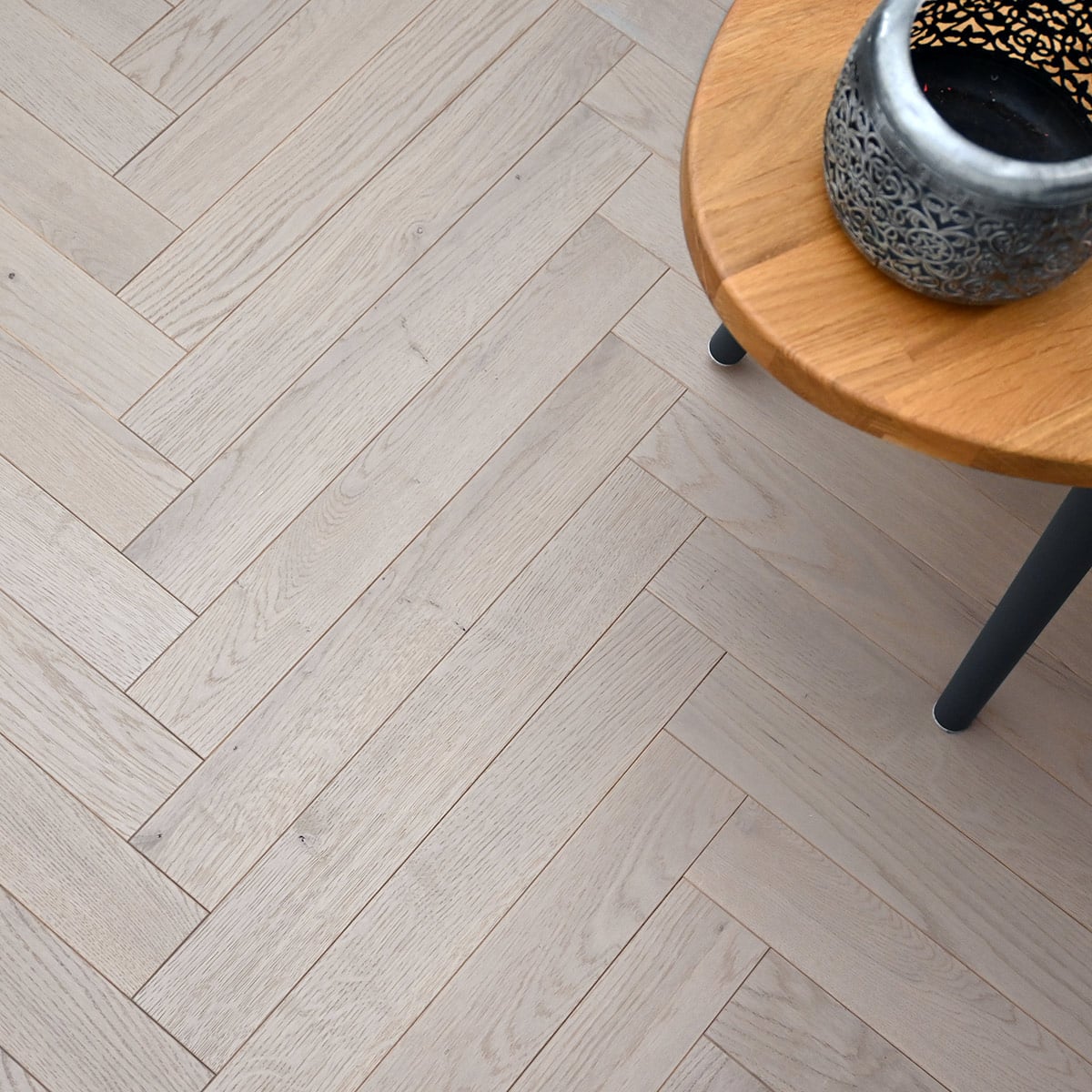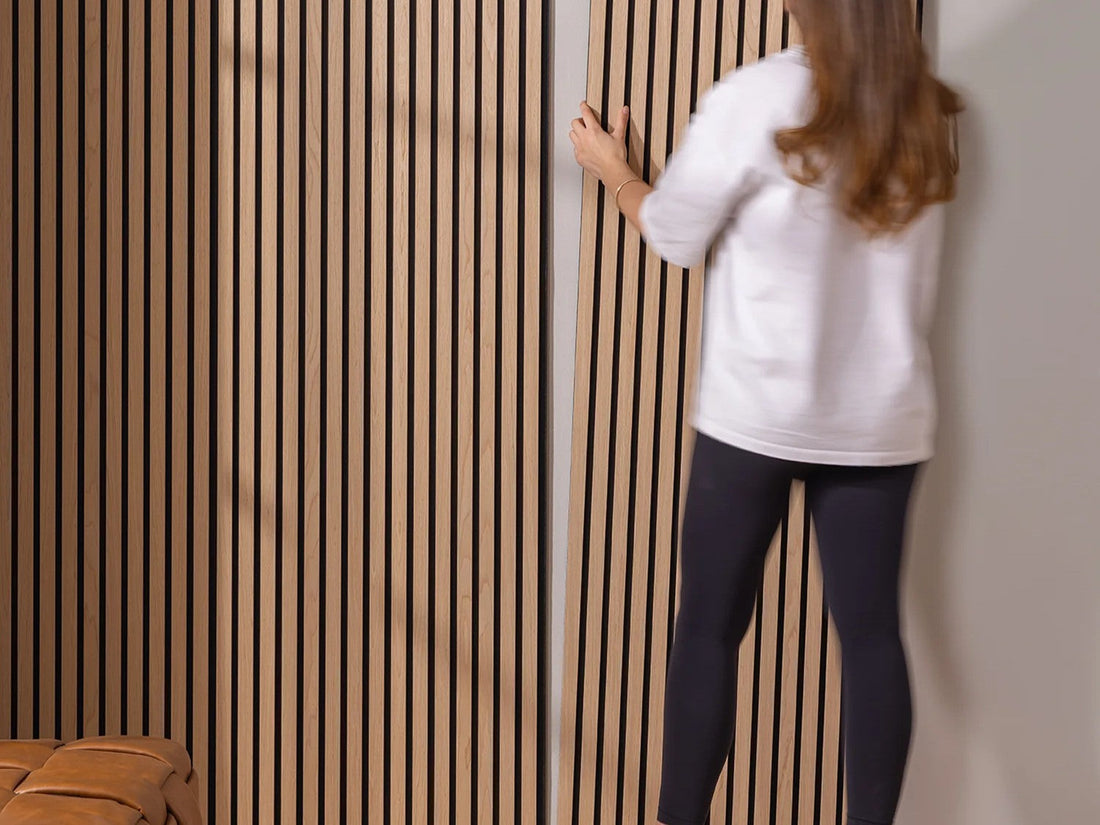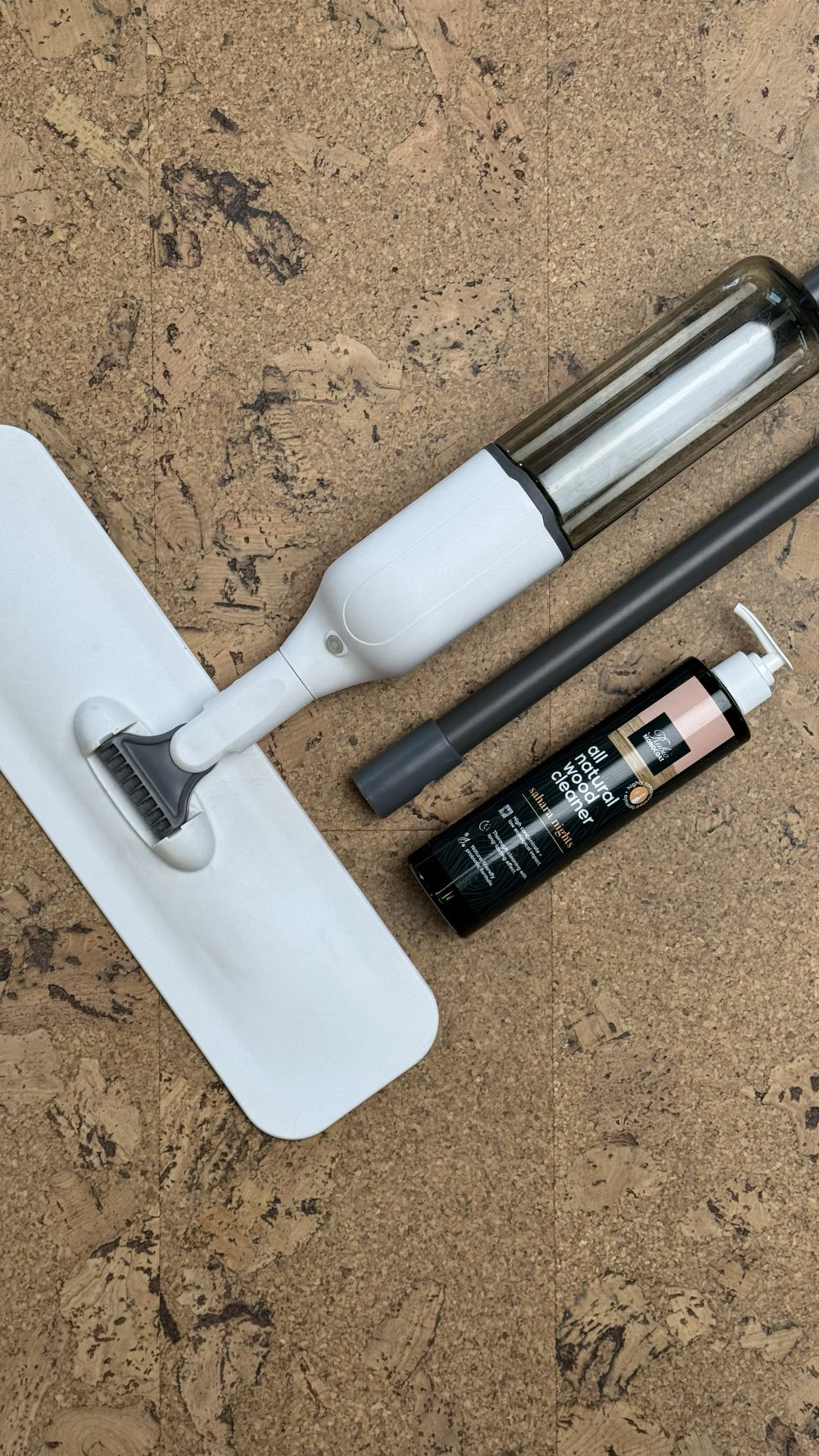

What Is the Difference Between Engineered and Solid Wood Flooring?

Related Posts
Introducing the new Urban Nature Engineered Wood Flooring Collection
Our much-loved Urban Nature collection is back, reimagined, and ready to bring timeless rustic character into modern homes. Crafted from Premium European Oak, the new Urban Nature range combines craftsmanship, sustainability, and effortless style. Here are some of the collection's highlights. Rustic design for a naturally lived-in look At the heart of Urban Nature are floors that tell a story. Each board is beautifully textured with worn, rustic details, and subtly distressed finishes, that highlight the natural charm of oak. The result is a engineered wood floor that feels as though it’s always belonged, rich in character, authentic in appearance, and designed to create a truly lived-in look from day one. Now available in plank and parquet formats Bringing you more design freedom, previously available only as engineered oak planks, Urban Nature now includes both plank and parquet formats. This allows you to mix different laying patterns throughout your home, whilst maintain the same wood floor finish. Maybe choose a welcoming herringbone layout in your hallway, that flows seamlessly into wide oak planks in your living spaces. Larger sized planks and herringbone blocks Choose Urban Nature oak planks, and find boards measuring a generous 2200mm in length and 220mm wide. These longer, wider boards create a spacious, seamless look that enhances any interior. Or the herringbone blocks are equally generously proportioned at 600mm x 125mm, offering you a contemporary take on a classic pattern which is striking, but not overly busy. Built for stability, durability, and sustainability Every Urban Nature floor is crafted from special rustic-grade Premium European Oak, responsibly sourced from sustainably managed forests, so both quality, and sustainability are built-in. And with a total 15mm thickness, featuring a 4mm oak top layer, these floors offer lasting strength, and underfoot stability, ready to withstand the rigours of daily home life for years to come. Meet the four Urban Nature wood floor colours Each design in the collection has been individually treated with expert craftsmanship to bring out unique tones, textures, and surface details. Sandstone Sandstone has been intentionally distressed to bring out the rustic qualities of the wood. Subtle hand-scraping and cross-sawing effects are applied, before the surface is finished with UV oils that leave a muted weathered surface, with a contemporary rustic edge. Amberwood Amberwood is gently smoked and distressed to create their homely, aged appearance. After undergoing subtle hand-scaping and cross-sawing effects, the UV Oils applied lock in their warm and charming rustic golden glow. Granite Smoke The special rustic grade oak used for the collection really comes to life in Granite Smoke. After smoking and distressing the oak, the warm earthy UV oils applied wash over the golden undertones of the surface. Shadow Grey For a modern rustic aesthetic, Shadow Grey blends warm oak hues with subtle grey tones. The rustic grade oak is darkened with smoking, before the surface is naturally distressed, then the coloured UV oils lock in the soft grey hues. Are you ready to find your favourite Urban Nature Wood Floor? Browse the full Urban Nature Collection and order free samplesBrowse the Urban Nature herringbone designs and order free samplesBrowse the Urban Nature plank designs and order free samplesFind your local approved V4 retailer to view large format samples of the floors in their showroomStart visualising Urban Nature floors in your home using our free wood floor room visualiser
Read moreHow to install wood-effect slatted wall panels
Adding slatted wooden wall panels to your walls can instantly transform an interior space. The combination of soft wood tones, contemporary slats, and their organic, nature-inspired look adds a touch of natural elegance and subtle depth — perfect for minimalist designs. And the benefits don’t stop there. As well as being a stunning design feature, our wall panels also offer acoustic benefits as the slats are mounted on a dense felt backing panel, helping to soften sound and enrich the acoustic atmosphere of your space. Are wooden wall panels easy to install? Yes, by following the installation instructions carefully, fitting slatted wall panels is a straightforward task for anyone with good DIY skills and the right tools. In just a few hours, you can transform your walls with beautiful, wood-effect panelling. How do I install your wooden wall panels? The installation of our slatted wall panels is a clean, quick and easy process using commonly available tools. The panels can be fixed to your wall using any PU high tack adhesive, and they can be easily cut to the desired size using a fine-tooth hand saw or jigsaw. What tools do I need? To achieve the best results when installing your wood wall panels, we recommend having the following tools available: Tape measure – for accurate measurements. Pencil or marker pen – to mark cutting or fixing points. Fine-tooth hand saw or electric jigsaw – to cut panels to size. Spirit level – to ensure your panels are perfectly straight. Silicone gun – for applying adhesive evenly. What preparation do I need to do before I start the installation? We always recommend opening each box of panels and removing all packaging at least 24 hours before installation. This allows the panels to acclimatise to the room where they will be installed. Keep the room at a normal, stable temperature during this time. Before installation, make sure the wall surface you are applying the panels to is straight, smooth, dry, and free from dust. Proper wall preparation will help ensure the panels adhere securely and achieve a flawless finish. What is the best orientation for my panels? Our slatted wall panels can be installed vertically, horizontally, or diagonally, depending on the visual effect you want to achieve. Before cutting any panels, decide on your preferred orientation. It’s a good idea to hold a few panels against the wall in different directions to see how each layout will look in your space to help you confirm your choice before starting the installation. How do I cut the wall panels? Cutting the wall panels is quick and easy. Simply measure and mark your required dimensions on the back of the panel, then cut along the marked line using either a fine-tooth hand saw or an electric jigsaw for a neat finish. Always cut with the decorative face of the panel facing downwards. In other words, the slatted front should be against the floor. This helps prevent any surface chipping and ensures a clean, professional edge. Installing wall panels with adhesive We recommend installing the panels using a PU high-tack adhesive, which will provide a strong and reliable bond between your wall and the panels. Apply a continuous 8mm - 10mm bead the full length of the panel, every 5cms across the board to ensure an even coverage ready for the panel to be pressed into place. Installing wall panels with mechanical fixings and glue For added strength and security, you can also secure your slatted wall panels to the wall using black wide-head flange screws and a suitable wall anchor system appropriate for your wall type, whether solid masonry, plasterboard, or another substrate. When using both adhesive and fixings, always apply the adhesive first, then secure the panel to the wall with flanged-head screws. If you’re unsure which wall anchors to use, it’s best to seek advice from a local professional to ensure they’re suitable for your wall type. Take care to avoid drilling or screwing into electrical cables or water pipes. Tools are available that can detect hidden wiring and pipes to give you extra peace of mind. How do I install the panels around existing wall sockets? When installing slatted wall panels around electrical sockets or other fixtures, simply measure the position of the socket on your wall, transfer the measurements to the back of the panel, and cut out the opening using a jigsaw. Take extra care when working near electrical sockets. If necessary, seek guidance to locate any hidden wires within the wall before drilling or cutting to avoid accidents. Can I hang pictures, TVs and other items to my wall panels? Yes, but if you plan on hanging TVs or decorative items on your panels, you should always wait at least 24 hours after installation before hanging anything to allow the adhesive to set fully. The fastenings supplied with the brackets or fixings of the item you are planning on hanging to the panels must be able to go through the complete slatted wall panel, and it's also extremely important the anchor has the correct depth into the substrate behind the panel. By following this guidance you are ensuring the significant weight you would like to hang is supported by the wall behind and NOT the panel itself. Always pre-drill holes through both the MDF slat and the black woven backing felt to avoid damage and ensure a secure installation. If in doubt, call in a professional! While our guidance can be followed by anyone with competent DIY skills and the right tools, if you’re unsure, hire a professional installer experienced with wall panelling. They’ll ensure your panels are fitted to the highest standard and safely secured with the correct fixings, with full consideration for any hidden electrical cables or plumbing. Whether you choose to install them yourself, or have an expert handle it, by following our guidance, in no time at all you will be admiring your beautifully clad walls, adding a contemporary, natural wood aesthetic into your room. Ready to find your V4 wood-effect wall panels? Start browsing the range of colour tones available in our wall panel collections and order free samples of your favourites for fast UK-wide delivery straight to your door. Once you've decided which tone of wall panel is right for your home, you can buy our slatted panels direct from our online store for fast delivery to your home.
Read moreChoosing a Light Wood Floor
The wide range of wood floor tones available today offers incredible versatility for home design. Thanks to modern surface treatments, and coloured oil finishes, homeowners now have access to an array of beautiful white, and light-toned wood flooring options. Light or white wood floors can instantly bring a fresh, contemporary feel to a space, perfect for complementing modern or minimalist interiors. However, they also pair wonderfully with more traditional styles and layered colour schemes, adding brightness and depth into a room. We’re often asked whether a lighter-toned wood floor is a good choice for home design. Below, we’ll explore some of the reasons why choosing a light wood floor can be a stylish and practical way to enhance your space. Will a light wood floor make my room feel bigger? One of the main benefits of choosing lighter flooring is its ability to create a sense of openness and brightness within a room. When natural sunlight pours in, or even under artificial lighting, light wood floors can appear almost illuminated. This reflective quality helps amplify light, creating an airy, calm, and spacious atmosphere. Below, our Misty Grey Herringbone flooring beautifully illuminates modern bedroom design. The way the light interacts with its soft muted and rustic surface creates a lovely ambience in the space. The longer, narrower proportions of our Tundra blocks further enhance the room’s sense of space and tranquillity. Are light wood floors good for Scandi-inspired interior design? Scandi design is all about simplicity, light, functionality, and a connection to nature. Through the use of natural materials and textures, Scandinavian spaces are designed to feel light and airy, ready to maximise brightness, especially during their longer, dark seasons. A lighter style of floor plays a key role is that ethos, so if you are looking to bring some of the beautiful principles of Scandinavian design into your home, definitely consider a flooring choice that leans towards whitewashed, muted, or naturally toned finishes. Aptly named, our Fjordic Shore finish from our Driftwood Collection is treated to create a beautifully raw and understated oak surface. In this new-build apartment in Epsom, the flooring completes the simple, Scandi-inspired design perfectly. What colours go with light wood floors? One of the many advantages of choosing a light oak floor is its incredible versatility. The colour combinations you can create are almost endless. In truth, there are very few shades that don’t complement light wood tones. If you want to keep things crisp, clean, and simple, light oak is the perfect foundation. Below, the raw, natural aesthetic of our Shore Drift Oak Herringbone introduces gentle warmth and texture into this minimalist living room design. The pairing of simple white-painted walls and soft blue furnishings keeps the look contemporary and inviting, for a space that feels both fresh and welcoming. At the other end of the spectrum, darker colours can create stunning contrasts against pale wood floors. The whitewashed tones of our Seashell Chevron flooring below, sit beautifully alongside the darker greens and blues that feature in this living room, resulting in a bold yet balanced design that feels both sophisticated and full of character. Will light wood floors show more dirt? Whether you have a dark, natural, or white wood floor, all will encounter the same amount of everyday dust and dirt that naturally accumulates in the home. And, regardless of tone, all of our wood floors are finished with high-quality oiled or lacquered treatments, that not only enhance their appearance, but also provide essential protection and durability against everyday wear and dirt. It’s true that lighter floors can make marks like muddy paw prints, or footprints, a little more noticeable. However, maintaining them is simply a matter of following a regular and gentle cleaning routine, just as you would with any wood floor colour. Below, our Tundra Seashell Herringbone flooring is being thoroughly enjoyed by a very happy cat, regardless of any muddy paw prints, safe in the knowledge that a quick sweep, vacuum, or light mop will easily take care of any dirt. For mopping, our Wood’s Good Spray Mop, paired with our Rubio All Natural Cleaner, is a highly recommended choice. It’s specially designed for all hardwood floors, caring for their natural surface, whilst keeping them clean. Suitable for both oiled and lacquered surfaces, it’s a simple and safe solution for everyday wood floor upkeep. Can I have a light wood floor in my kitchen? Yes, absolutely! With the right surface protection and regular care, a light wood floor can look stunning in a kitchen. Our durable oiled or lacquered finishes, provide the protective layer that helps guard against everyday spills and wear. So, with basic maintenance, any tone of wood, even the palest shades, work in this busy part of the home. Below, our Powdered White Oak engineered wood floors bring a soft and contemporary warmth to the beautiful pink kitchen of Millie Mackintosh, showcasing that light wood floors and kitchen design go hand in hand. Is plank or parquet best for a lighter toned wood floor? There’s no right or wrong answer when it comes to choosing between plank and parquet flooring for a light wood finish, it really just depends on the style and atmosphere you want to create. Light plank floors, especially when extra-wide or long, can make a room feel more spacious by creating a seamless, modern look. For example, our Driftwood Lichen White Oak planks below, which feature generous dimensions and soft white tones. On the other hand, light parquet styles like herringbone offer texture and pattern while maintaining a contemporary feel. Our Tundra Misty Grey herringbone creates a natural and elegant flow in this open-plan kitchen. Are there other light floor designs in the V4 Collections? Yes, our paler floors aren’t just found in our engineered oak collections. Delve into our Cork flooring collection, and you will find several options including this light and airy Muscat design. Or our SPC Click Vinyl collection includes the light, soft sandy tones of Quarry Sands Oak. Ready to choose your light V4 Floor? If you’re feeling inspired to bring light wood tones into your home, take the next step. Explore all of our lighter floor stylesOrder free samples of your favouritesFind a V4-approved retailer near you where you can view our floors in larger formatsTry our Room Visualiser and see how different styles will look in your space
Read more


